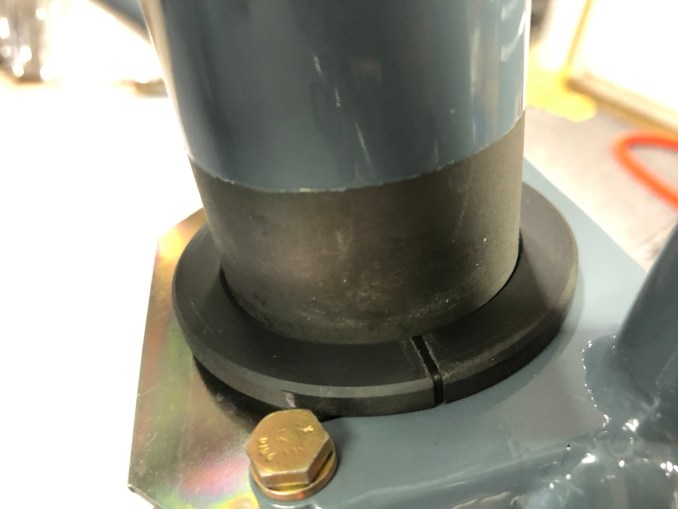On Wheels
With everything attached for the front and main landing gear, and all of the fuselage riveted together, I decided it was time to drop the fuselage onto its wheels, and free up my workbench. I’ve been working on the fuselage for a little over a year now, so I suppose this is something of a milestone. But there’s still a lot of work to do!


The last thing I did before dropping it on the wheels was to install some shims on the bushing for the nose wheel. Despite the improvement I saw from sanding the bushings, I was still observing a gap between the split bushing halves, and this seems to cause some friction as the bushings get compressed by the retaining plates. So, I 3D-printed some shims that are 1.1mm thick. It seems to help.





Despite all my efforts, I still see about 7 pounds of break-out force on the nose gear. That’s not much to have to push with my feet, but since the nose wheel is mechanically linked with the rudder, I want to be sure that the rudder will return to neutral when I let off the rudder pedals. I’ve been unable to find a spec for break-out force, so I don’t know if 7 pounds is too much or two little. From what I understand, you want some resistance to avoid having the nose wheel wobble while taxiing on the ground. Here’s a little video showing how I measured the break-out force:
Fellow Sling builder Evan B. has strongly recommended that I grease the contact surface between the leg and bushing; apparently they do this even at the factory. I tried using some LPS-2 spray lubricant, but that didn’t work at all, in fact it made things worse! Instead, I think I’ll need to use some of the grease that’s supplied with the kit for the wheel bearings. For now I’ll leave the bushings dry until I can attach the rudder and see how well the rudder springs work. I will also consult with TAF.